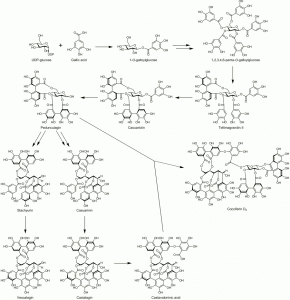Tannin biosynthesis pathways in plants are only partially known and further efforts at this area are needed to fill the remaining gaps in our knowledge of these essential pathways
Tannin structures can be very complex and to unravel all of them is a tedious, but an exciting task for a phytochemist. Even though most plant scientists may not be interested in the esoteric details of variation in tannin structure, knowledge of tannin biosynthesis can provide insight into the differences in tannin content among species and their tissues, and ultimately their biological and evolutionary consequences. For example, a typical plant cell does not produce both GTs and ETs simultaneously, and the efficient production of ETs must have direct negative effects on PAs and flavonoid biosynthesis. For this reason both ETs and PAs do not accumulate to high concentrations in the same tissue and all this can be deduced from the branches shown in tannin biosynthetic pathways.
Our flag publications in this area are the papers describing gallic acid biosynthesis in birch, and the presumable biogenesis of galloylglucoses and ellagitannins in the same plant:

